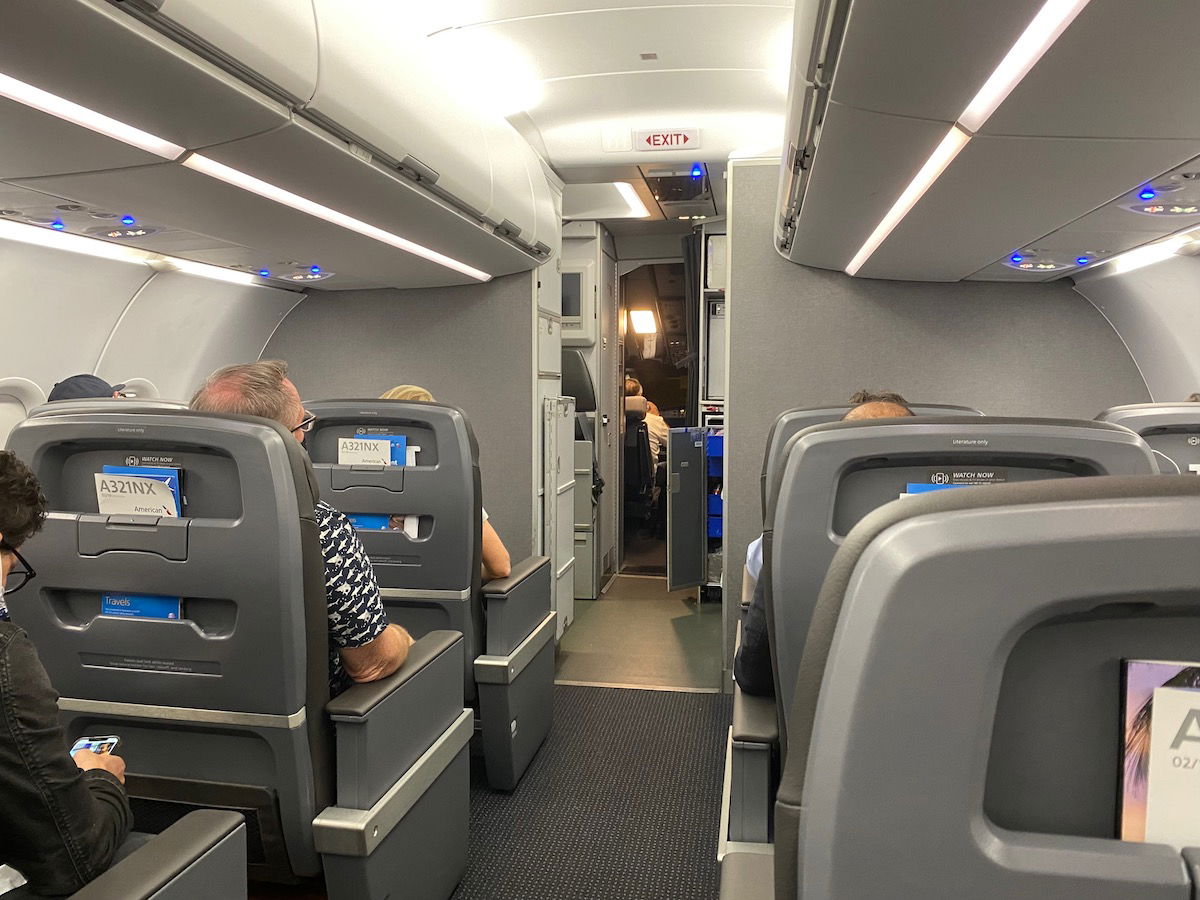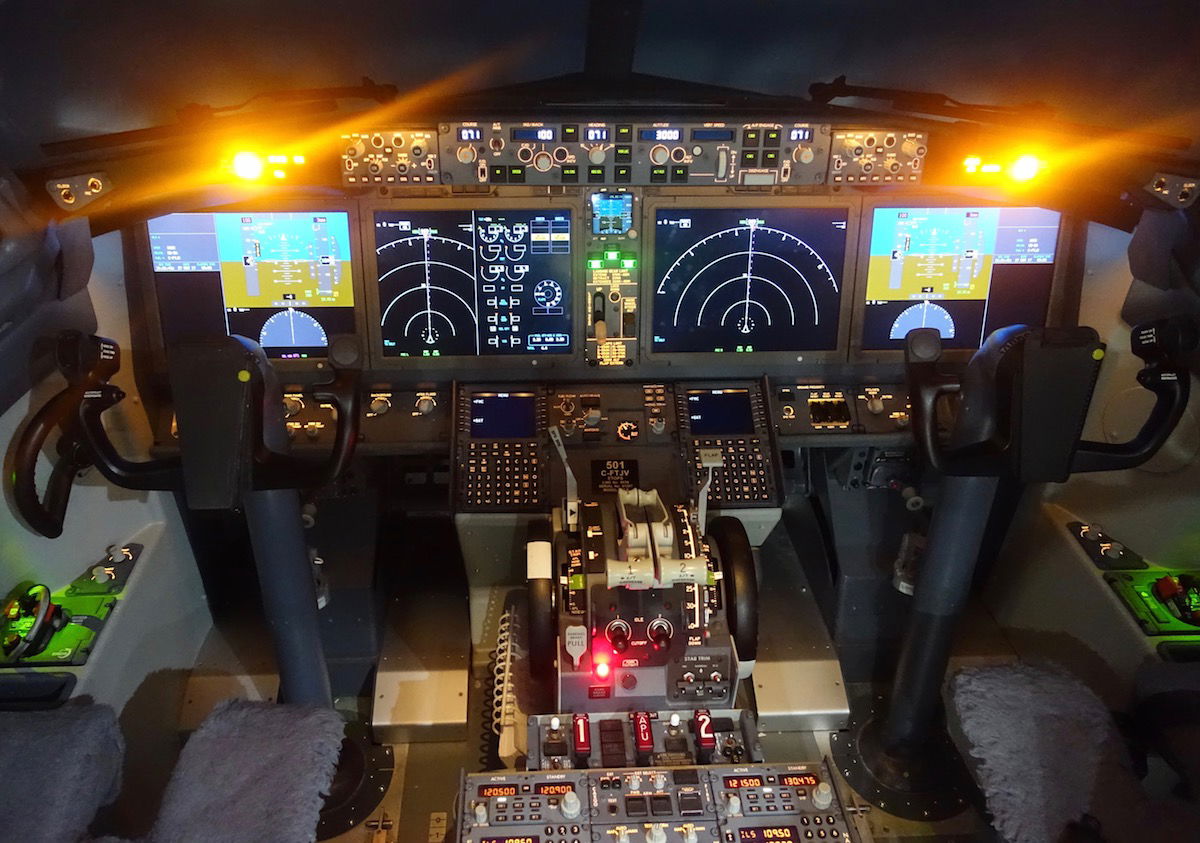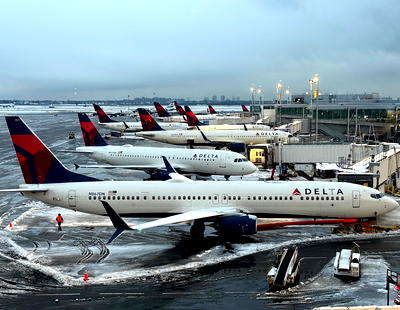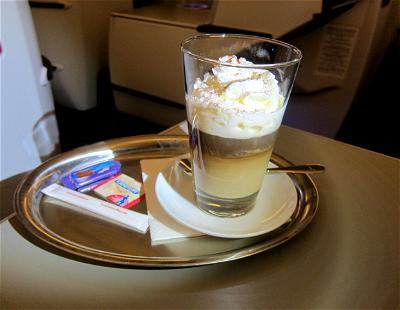For years, there had been talk of the cockpits of commercial aircraft in the United States getting a second flight deck barrier. This started to become more serious in 2022, when regulators moved forward with a recommendation to implement this change. A final ruling was issued in 2023, and now this has really been finalized, with the recent signing of the FAA reauthorization bill.
Is this a sensible development that will make flying safer, or unnecessary and a waste of money?
In this post:
FAA will require second flight deck barrier
The Federal Aviation Administration (FAA) will require a secondary barrier on the flight deck of new Part 121 commercial airplanes in the United States, to ensure the safety of the aircraft, crew, and passengers. As the FAA describes this, the intent is to slow any attack on the flight deck long enough so that the flight deck can be closed and locked before an attacker could reach it.
With this, aircraft manufacturers will have to install a second barrier. This rule will take effect for newly built aircraft as of the middle of 2025.
This was actually proposed several years back — the FAA was supposed to have adopted this rule by 2019 under a 2018 federal law, but the agency hasn’t acted until the past couple of years. Of course the terrorist attacks of 9/11 changed aviation forever. Since 9/11, we’ve seen the introduction of reinforced cockpit doors, which realistically can’t be broken into.
This new law is intended to address situations where one of the pilots has to leave the cockpit (whether to go to the bathroom, go on break, etc.). Currently in these situations, a flight attendant will simply block the aisle with a cart while the door is open.
The FAA is estimating that this secondary barrier will cost $35,000 per aircraft, including the purchase of the barrier plus the installation. After the addition of training and other costs, the present value costs for this rule are $236.5 million at a 7% discount rate and $505 million at a 3% discount rate.
Here’s how US Transportation Sectary Pete Buttigieg describes the new rule:
“Every day, pilots and flight crews transport millions of Americans safely — and today we are taking another important step to make sure they have the physical protections they deserve.”
So, how would this second cockpit barrier work? Let’s use the below picture of the front of an American A321neo cabin as an example. It’s my understanding that right in front of the bulkhead there would generally be a second “gate,” which would be extended when someone needs to access the cockpit. Some airlines have voluntarily had this for years. At least going back many years, I remember United 757s having these kinds of “gates” (I’m not sure if it’s still the case).

Is a second cockpit barrier really necessary?
It goes without saying that everything should be done to make aviation as safe as possible. As a matter of fact, this change is the last 9/11 Commission recommendation that hasn’t yet been implemented.
That being said, this seems like a solution that doesn’t actually solve a whole lot. How many people have successfully broken into a cockpit of a commercial airplane in the 20+ years since 9/11? I think zero globally, but someone correct me if I’m wrong.
That comes down to multiple factors:
- It comes down to reinforced cockpit doors, which mean that you can’t break into cockpits
- It comes down to the mentality around hijackings having changed; previously if someone threatened an airline employee with a weapon, they’d typically let them into the cockpit, while that wouldn’t happen in a post-9/11 world
- Passengers wouldn’t allow a hijacking to happen; in the past they would have probably cooperated with hijackers, thinking that would be the solution that leads to the least damage, while I think that mindset has changed post-9/11
Let’s talk about another aspect of the reinforced cockpit door. How many planes have crashed in the past decade due to one pilot being locked out of the cockpit and not being able to get back in?
- In November 2013, LAM Mozambique flight 470 crashed while the captain was in the cockpit and the first officer was locked out of the cockpit
- In March 2014, Malaysia Airlines flight 370 went missing, and the leading theory is that the captain hijacked the plane while the first officer was locked out of the cockpit
- In March 2015, Germanwings flight 9525 crashed while the first officer was in the cockpit and the captain was locked out of the cockpit
- In March 2022, China Eastern flight 5735 crashed, and US officials believe that this was intentional based on data from the flight
While I’m not suggesting we should get rid of reinforced cockpit doors, one has to wonder how many lives have really been saved by them.
To me, pilot mental health and one person in a cockpit presents a much bigger risk to aviation than adding a second cockpit barrier. Admittedly this is more of a global problem than a US problem — at least US airlines are required to always have two people in the cockpit, which is why a flight attendant always has to enter the cockpit when a pilot leaves. This doesn’t apply to foreign airlines flying to the US, though. Furthermore, I’m happy that the FAA is finally starting to address pilot mental health.

Bottom line
The FAA will be requiring airlines to install a second cockpit barrier, which extends out when the cockpit door needs to be opened. In most cases, this will be a gate. You can expect this change to be introduced on new aircraft as of the middle of 2025, so it’s just over a year away.
On the one hand, I guess this can’t hurt, other than the cost. On the other hand, this seems to address what I’d consider to be an absolutely tiny risk.
What do you think — is a second cockpit barrier on commercial airplanes really necessary?





Not introduced during the Trump administration as Ben L suggests. The “Saracini Aviation Safety Act of 2013” was introduced in both the house and senate in 2013. Captain Victor Saracini was the PIC of United 175. Barack Obama was president I. 2013 to set the record straight. It took this long to get it past the finish line.
Uh, oh, does that even mean a longer wait for the front bathroom, if the pilots have to 'go'?
Complete nonsense.... The US is a fear based hysterical country at time --- seeing boogey men (sic) behind every tree... thinking the worst and spending billions and billions (look how much is spent on public safety in the US compared to other countries).
On a recent Lufthansa flight, the flight crew came out of the cockpit and went to the restroom --- No barriers, no flight attendants blocking the way, no Flight attendant having to...
Complete nonsense.... The US is a fear based hysterical country at time --- seeing boogey men (sic) behind every tree... thinking the worst and spending billions and billions (look how much is spent on public safety in the US compared to other countries).
On a recent Lufthansa flight, the flight crew came out of the cockpit and went to the restroom --- No barriers, no flight attendants blocking the way, no Flight attendant having to go into the cockpit... Meanwhile, on US airlines they emerge in complete hysteria - The tell tale sign ? First the seatbelt light goes on---in completely smooth travel (dont get me started on that, US airlines put the seat belt on needlessly for long period, with a hint of turbulence) - then the flight attendants gather at the front ( HEY LOOK bad guys, we are letting you know the flight crew is coming out), then the barricades and hysteria...
FEAR FEAR FEAR and over reaction in everything we do, why ?
If there is a rule, after the secondary barriers are installed, requiring the cockpit door is not locked when one pilot has left and if no pilot can leave the cockpit unless the secondary barrier is in place then I can see how this can prevent the single pilot accidents that have occured after 9/11.
Isn't it just the silliest thing you've ever heard? Putting a door on an airplane cockpit! I mean, come on. What's next, a sunroof for a submarine?
Waste of resources and time IMHO.
Let's look at how many accidents there are in the rest of the world that do not use reinforced doors....Interesting no mention about the additional use of space in the plane which will take revenue from airlines.
The US govt imposing stupid and unneeded regulations? Surely not.
I'd question how likely it would be for passengers to do anything in a hijack tho. The seat room is now so small that it takes so long for someone to get out of their seats that the hijackers would have plenty of time to see them start moving with no chance to take them by surprise.
Not sure about this but as long as TSA continues to ban the $0.10 bottle of water that I buy at Costco I feel very safe. That water is the most dangerous threat of all.
I love how the internet can decide what is right and not right without having all the details. They wouldn’t be doing this if there hasn’t been intel from the government that a cockpit breach could be talked about on terrorist channels or if there hasn’t been an alarming number of passengers (especially during COVID) becoming belligerent and made their way towards the door. They don’t do things or make policies “just because”
Ohh yeah. The government is just there to help. Bureaucrats aren't at all known for doing the unnecessary. Your post is comical. This is literally you
https://youtu.be/w7PF07A5W28?feature=shared
That’s a negative. And we only need one pilot on domestic flights within the U.S. Reduce the number of FAs and in turn require all passengers to obtain a travelers license. Take a course and pass an exam about what to do in the event of an emergency .
I understand the amount of flight crew on US flights may seem unnecessary, but reducing crew requirements and leaving it in the hands of passengers would be disastrous. We need two pilots on the flight deck, not only to prevent single-pilot accidents, but also to provide full situational awareness at all times. Decreasing the amount of flight attendants would be dangerous, especially with the rise in unruly passengers on the US flights. I’ve only had...
I understand the amount of flight crew on US flights may seem unnecessary, but reducing crew requirements and leaving it in the hands of passengers would be disastrous. We need two pilots on the flight deck, not only to prevent single-pilot accidents, but also to provide full situational awareness at all times. Decreasing the amount of flight attendants would be dangerous, especially with the rise in unruly passengers on the US flights. I’ve only had one instance where I came close to restraining a passenger, and I was very happy to have two other flight attendants with me during that situation.
Just like how we failed on 9/11.
We're trying to prevent the terrorists of yesterday not tomorrow.
Well...from afar, it looks like your country is trying very hard to re-elect the terrorist of tomorrow...
This just sounds like a way for FAs to dick around behind this gate.
Boeing protests additional barrier! Boeing CEO Chump Chasly has filed a formal protest. “We cannot build planes unless they crash on takeoff, wheels fall off, and doirs and door panels fly off. Now this. This barrier is just one more thing we will screw up. Flying public will trust Boeing even less. And all the blame goes to the government! To Clowndancer I say ‘you are the chump’.
Simple Simon is right! All passengers should be handcuffed behind the back! Pilots too!!! Lets make flying safe for the public again!
Cost is trivial. Look at the number of passengers a typical 737 carries over a 2 month period. When airlines get the new planes with this feature the can charge everyone an extra dollar per flight. Cost of new doors is done. If you charge extra over a 12 month period tickets go up 8 pennies. Chump change. I hear Republican outrage! Forcing companies to charge an extra 8 pennies per ticket for a year...
Cost is trivial. Look at the number of passengers a typical 737 carries over a 2 month period. When airlines get the new planes with this feature the can charge everyone an extra dollar per flight. Cost of new doors is done. If you charge extra over a 12 month period tickets go up 8 pennies. Chump change. I hear Republican outrage! Forcing companies to charge an extra 8 pennies per ticket for a year will destroy aviation and lead to a low stock price. It may result in bankruptcy! Hehe! I say Chump change, chump!
“It goes without saying that everything should be done to make aviation as safe as possible.”
Everything?? Really???
Like strip searching all passengers? Keeping passengers handcuffed during flight?
All other things aside, the cost seems astronomical. This should not cost more than a thousand or two per aircraft, esp if no electronic components are involved.
Couldn't it be a sliding partition with a manual locking mechanism?
ssshhh...don't let the bozos know it's actually a cheap fix! What are you trying to do, man? Spoil our overinflated prices for little bits of cheaply sourced aluminum and plastic?!?!
No a second door is not needed. I also question the need for the first super strong door. Around thirty thousand hours, 40 years from Connies to 727,747,757's.
How is this going to pass emergency evacuation requirements? If the cattle gate is locked then it’s impossible to access the front two doors?
Mayor Pete and the government are preparing to fight the last war again. Maybe they all should go on indefinite maternity leave.
You realize this policy is being administered pursuant to a Trump-era law, yes?
Also, the bigotry of mocking a gay male parent's parental leave (which, incidentally, was adopted across the federal workforce under--you guessed it--the Trump administration) as "maternity leave" is ugly and shouldn't be welcome on this blog.
Just remember Germanwings Flight 9525. the rest is just BS!
“ It goes without saying that everything should be done to make aviation as safe as possible.”
Does it?
Isn’t the rest of the article a contradiction of that statement?
How about “Everyone wants to be safe, but shouldn’t we weigh the costs vs the benefits of any proposal?”
Another example of how Aviation legislation is born in the US, through the poltical system and not through Independent boards with experts.
This is BS and will not prevent anything.
If you wanna take out the Pentagon or another building with an aircraft, just hire and then hijack a Bombardier Global or something
Not to nit-pick but the use of 'barrier' and 'door' interchangeably is confusing especially as you read through the post.
"Airplanes Will Get Second Flight Deck Barrier"
"FAA will require second flight deck door"
The FAA only used the term barrier, not door. Big difference.
It’s a valid point - basically it sounds like they want the ‘cart barrier’ made into something more substantial . Sounds fine , a door sounds overkill and relates more to your messaging about potential access issues but multiplied when a pilot needs to get back in quicker
@ Todd -- Totally valid nitpick. Thanks! Updated the post, that shouldn't have said "door."
This is idiocy. The biggest risk on a plane is one of the pilots have bad intentions and locking himself inside the cockpit. A second door only makes this issue worse. If we can’t trust a lot of passengers, we certainly can’t trust 1 or 2 pilots. It would make sense to have two doors if there are no locks.
After 9/11 passengers are not going to comply with hijackers. There should be a...
This is idiocy. The biggest risk on a plane is one of the pilots have bad intentions and locking himself inside the cockpit. A second door only makes this issue worse. If we can’t trust a lot of passengers, we certainly can’t trust 1 or 2 pilots. It would make sense to have two doors if there are no locks.
After 9/11 passengers are not going to comply with hijackers. There should be a flight attendant seated or behind the cockpit at all times on a flight. Locking passengers out of the cockpit for pilots to pull a eurowings or MH370 shows the government is always evil.
Or if not evil, at least moronic. This is another stupid decision made by a committee of idiots. What data informed this decision? It's pure nonsense that they've pulled out of their rectums.
Exactly! A barrier will make passengers less safe instead of safer.
Agreed - Any terrorist or anyone storming the cockpit would be ripped to shreds by passengers --- The next time, nobody is going to just sit there like sheep, they will make sure the bad guys are immobilized if not killed in the takeover process.....
It's a waste of money.
Yes it’s rather low yield. The money would be better used to improve TSA’s detection of contraband instead. In other words, get rid of the problem before it becomes a problem.